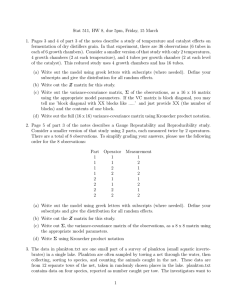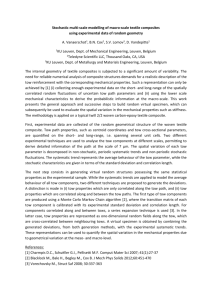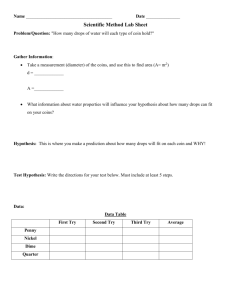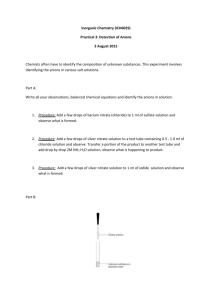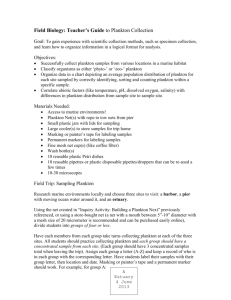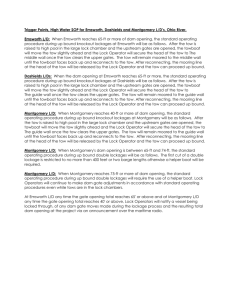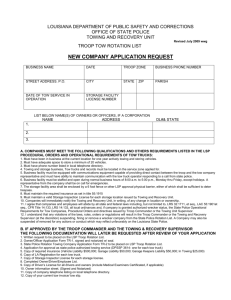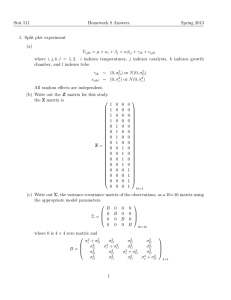directions - cosee now
advertisement
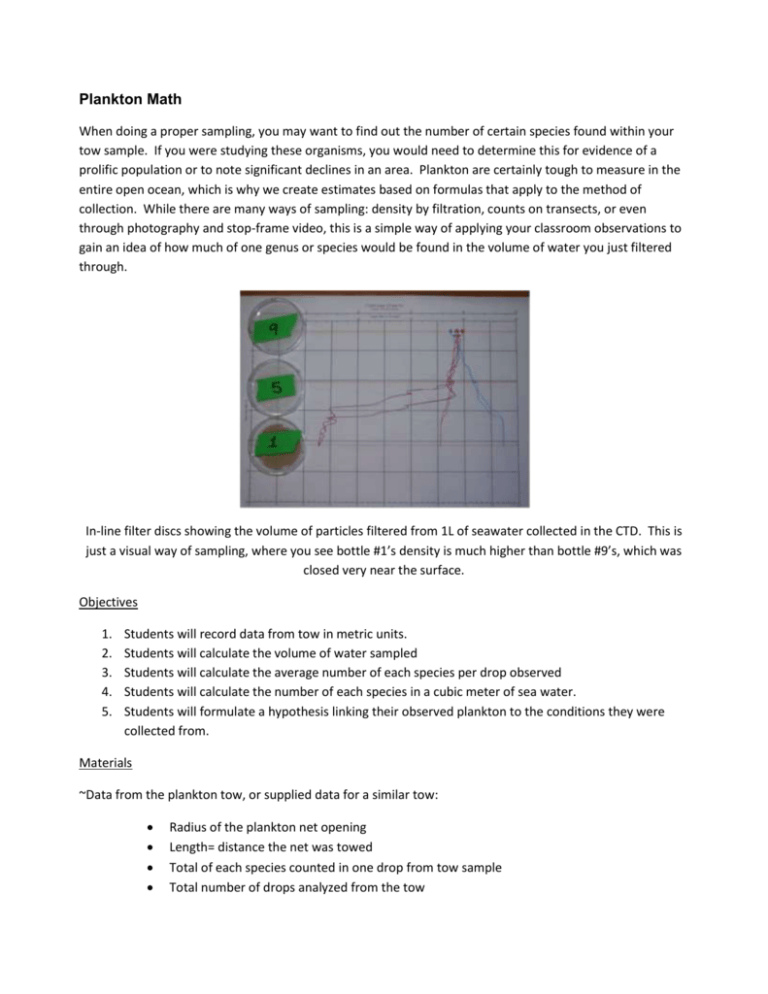
Plankton Math When doing a proper sampling, you may want to find out the number of certain species found within your tow sample. If you were studying these organisms, you would need to determine this for evidence of a prolific population or to note significant declines in an area. Plankton are certainly tough to measure in the entire open ocean, which is why we create estimates based on formulas that apply to the method of collection. While there are many ways of sampling: density by filtration, counts on transects, or even through photography and stop-frame video, this is a simple way of applying your classroom observations to gain an idea of how much of one genus or species would be found in the volume of water you just filtered through. In-line filter discs showing the volume of particles filtered from 1L of seawater collected in the CTD. This is just a visual way of sampling, where you see bottle #1’s density is much higher than bottle #9’s, which was closed very near the surface. Objectives 1. 2. 3. 4. 5. Students will record data from tow in metric units. Students will calculate the volume of water sampled Students will calculate the average number of each species per drop observed Students will calculate the number of each species in a cubic meter of sea water. Students will formulate a hypothesis linking their observed plankton to the conditions they were collected from. Materials ~Data from the plankton tow, or supplied data for a similar tow: Radius of the plankton net opening Length= distance the net was towed Total of each species counted in one drop from tow sample Total number of drops analyzed from the tow Procedure 1. The first step, once the data has been collected, is to determine the volume of water that was sampled by the net. To compute this, you will use the basic formula for the volume of a cylinder: Volume= π r2 L With: π = 3.14 r2 =radius of net opening (in meters), squared L= length/distance net was towed, in meters 2. Next you will need to calculate the number of each species in one drop from your sample. If on your first slide you note 6 copepods, 3 on your second, and 5 on your third drop, you would plug in those sums as follows: # of each species/ Total # of drops analyzed = average # of each species per drop (plugging in the numbers from above: 14/3= 4.67) 3. Finally, you will compute the number of each species in a cubic meter of sea water. To complete this formula you will need the solved for values from the first two problems: a) The volume of sea water you towed the net through b) The average number of each species per drop c) The total number of drops in the sample jar (determine this by multiplying your sample jar size in mL by 20 drops per mL; i.e a 500mL jar would equal: 500mL * 20= 10,000 drops) Input all of your data for each species in the following equation: # of species/m3 = (average # of species/drops * total drops)/Volume of tow Genus/Species # in Drop 1 Drop 2 Drop 3 Drop 4 Drop 5 Drop 6 Drop 7 Drop 8 Drop 9

